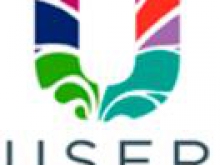Observer partner The cityPopulation: 11.477.000
Surface area: 5343,05 km
Density of population: 2148
Employement rate: 48,30%
Unemployement rate: 12,8%
From ancient times till today, this legendary city is divided by the Bosporus strait, lies in both Eurpe and Asia. The European side is separated into two by the Golden Horn. The old town sprawls along one side, with its Byzantine walls and Ottoman palaces facing the Marmara Sea, on the other side, one can see the ancient Genoese port of Galata. It extends both on the European (Thrace) and on the Asian (Anatolia) side of the Bosporus, and is thereby the only metropolis in the world which is situated on two continents. In its long history, Istanbul served as the capital city of the Roman Empire (330-395), the Byzantine Empire (395-1204 and 1261-1453), the Latin Empire (1204-1261), and the Ottoman Empire (1453-1922). With its glorious history, the Historic Areas of Istanbul were added to the UNESCO World Heritage in 1985 and the city was chosen as joint European Capital of Culture for 2010.
Today, as well as being the largest city, Istanbul is the financial, cultural and economic center of modern Turkey even after Ankara became the new political capital in 1923. Many of Turkey's major manufacturing plants are located in the city, which is generally considered as the metropolitan area, making it one of the twenty largest metropolitan areas in the world.
The metropolitan territory is subdivided into 32 districts and 41 sub district municipalities and there is a Metropolitan Municipality responsible for entire area.
Istanbul has more than one port, in particular the port of Haydarpaşa and Ambarli, concentrating on goods traffic (container port) and Galata port, concentrating on cruise liners.

